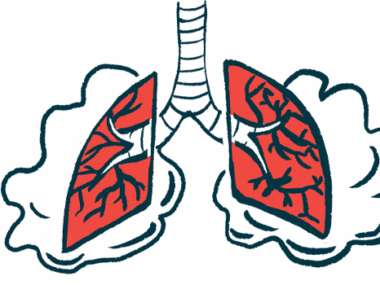Swallowing problems common in untreated SMA type 1 infants
Natural history study addressing knowledge 'void' in DMT age
Written by |

Profound deficits in mechanisms essential for swallowing are common among untreated infants with spinal muscular atrophy (SMA) type 1, according to a natural history study.
While nearly all the babies could initiate the swallowing process, problems in the transfer of food or liquids from the throat into the esophagus were evident, leading to high rates of leakage into the airways.
These findings fill “a critical void in the current era where routine administration of disease-modifying treatments prohibits the prospective collection of these natural history data points,” the scientists wrote, considering them of importance to doctors, patient families, and in therapy development and testing.
The study, “Characterization of swallowing biomechanics and function in untreated infants with spinal muscular atrophy: A natural history dataset,” was published in the Journal of Neuromuscular Diseases.
Swallowing difficulties can be a cause of aspiration pneumonia
In SMA, nerve cells involved in muscle control degenerate, causing progressive muscle weakness and wasting, mainly affecting motor function.
Muscles supporting the face, mouth, and neck are affected, resulting in problems swallowing foods and/or liquids, referred to as dysphagia. This can trigger aspiration pneumonia, a lung infection caused by inhaling liquid, food, or vomit into the lungs. Such issues are especially prominent in SMA type 1, a severe form of the disease that emerges in infancy.
Since the advent of disease-modifying therapies (DMTs) for SMA, an overall improvement in swallowing abilities has been reported in patients. Still, swallowing difficulties continue to affect some infants, despite early treatment.
Practice favors treating children diagnosed with SMA as early as possible. Therefore, to accurately gauge the impact of current and future DMTs, a natural history of swallowing deficits among untreated young children with severe SMA is needed. But such data are increasingly difficult to obtain.
“This void limits the ability to evaluate the effects of disease-modifying treatments on swallowing,” the researchers wrote.
Scientists, mostly with children’s hospitals in the U.S., retrospectively reviewed medical records to identify infants with SMA type 1 who underwent videofluoroscopic swallow studies. Here, foods and liquids are mixed with a harmless substance visible on X-rays, such as barium, so the swallowing process can be monitored in real time.
To ensure an accurate representation of the history of early and severe SMA, the team selected infants untreated at the time of the swallowing test and showing disease symptoms no later than 6 months of age. For children diagnosed before symptom onset (via newborn screening), eligibility was restricted to those with two copies of the SMN2 gene, who are likely to have SMA type 1.
Infants selected were all in the first year of life and being treated at one of 13 hospitals in the U.S., Brazil, and New Zealand. They underwent an initial swallowing study at a median age of 3.37 months due to suspected problems in most cases (84%).
Liquids entered the airways in nearly all of the 62 infants with SMA type 1
Data showed that all but three of the 62 identified infants (95%) were able to initiate a swallow response. However, the transfer of both thin and thick liquids from the throat into the esophagus was impaired.
About half of the infants (52%) had problems elevating the soft palate at the upper back of the throat, which prevents food or liquid from entering the nose. A similar proportion (50%) showed abnormal tongue base retraction, which pushes food and liquids toward the esophagus.
Slightly less than half (47%) had problems opening the upper esophageal sphincter, the relaxation of muscles that allows food and liquid to pass into the esophagus. Around 1 in 4 (23%) infants also showed problems with the pharyngeal stripping wave, a series of throat muscle contractions that drive food/liquid down into the esophagus. The combined effects of these deficits resulted in little or no clearance of liquid from the throat in 24 (39%) infants.
Such throat-clearing problems, combined with the incomplete closure of the larynx that protects the airways during swallowing, resulted in liquids entering the airways in nearly all infants (97%). Aspiration also was common (76%).
Likewise, infants showed problems with sucking mechanics, as indicated by 1 in 4 (25%) unable to extract liquid from a nipple. This was due to an inability to initiate suckling or extract liquids despite attempts.
To assist with swallowing, about 1 in 3 infants relied on feeding tubes (31%) or the suctioning of food or liquid from the airways (34%). Those needing these supports had significantly worse swallowing mechanics when clearing liquid from the pharynx.
Swallowing difficulties quickly progressed from mild to severe
In the first month of life, swallowing problems were rarely seen except for liquid penetration into the airways (86%) and aspiration (43%). Over time, however, these impairments worsened, becoming severe over a median of 1.8 months.
While swallowing problems were common among older infants, severity wasn’t always present. For example, two of six infants assessed between ages 10 and 12 months showed mild impairments in esophageal sphincter opening, tongue base retraction, and pharyngeal stripping wave.
This work “in a large, international database of patients with SMA … found a high proportion of infants with SMA experience profound deficits in swallowing biomechanics and function within the first year of life without the receipt of disease-modifying treatments,” the scientists wrote. “Such information is essential to inform families of aerodigestive [respiratory and digestive tract] risks allowing for simultaneous, proactive clinical support while they pursue … treatments,” or while they are “considering additional disease modifying therapies.”
Future studies “utilizing supplemental metrics to evaluate swallowing biomechanics are warranted to further characterize deficits in untreated patients and examine the effects of disease-modifying therapy,” the team concluded.







